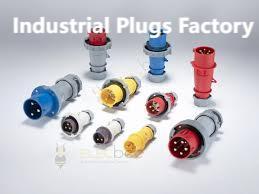Nante’s Practical Guide to Industrial Plug Factory Sourcing
Posted by awddd asaw
Filed in Other 71 views
Choosing the right supplier is pivotal for reliable electrical connections; an Industrial Plug Factory often defines downstream standards, influencing quality assurance and compatibility across projects. When planners align specifications early, referencing an Industrial Plug Factory during procurement helps ensure testing protocols and traceability meet installation needs.
Market drivers and common applications
Demand for robust connectors spans industries — manufacturing, renewable energy, temporary power for events, and heavy construction all rely on dependable supply. Buyers are looking for consistent performance under repeated mating cycles and exposure to dust, moisture, or vibration. Understanding the end use helps teams decide whether standard designs are sufficient or whether custom configurations are warranted.
Design considerations that affect performance
Connector performance depends on material choice, contact plating, and mechanical tolerances. Designers account for mating force, thermal properties, and how the connector will be mounted or shielded. Cable retention systems and strain relief features reduce the risk of premature failure in field conditions. Thoughtful design reduces service visits and improves system uptime.
Manufacturing practices and quality control
Production discipline matters: incoming material inspection, controlled plating baths, and repeatable assembly processes reduce variability. Inline testing — such as contact resistance checks and mechanical endurance cycles — helps catch defects before products ship. Clear batch documentation enables traceability that is valuable for large-scale projects and regulated sectors that require audit trails.
Nante Compatibility and accessory ecosystems
Accessory availability often determines how adaptable a connector solution will be in practice. Mounting flanges, gland assemblies, and compatible sealing elements let engineers integrate connectors into enclosures without extensive modification. When accessory families are well-documented and standardized, a single connector range can be deployed across multiple applications, simplifying logistics and spare-part planning.
Procurement strategies and lifecycle planning
Procurement teams benefit from specifying not only a connector type but also acceptable tolerances, testing regimes, and delivery flexibility. Including spare parts and explicit accessory compatibility in the initial contract prevents surprises during installation. Lifecycle planning considers repairability and expected replacement intervals; designs that allow component-level servicing often lower total ownership costs compared with fully sealed, non-serviceable assemblies.
Installation tips and field maintenance
Correct installation extends service life. Proper cable preparation, torqueing of mating hardware, and routine inspections for corrosion or wear are practical steps that reduce failures. Training field teams on correct engagement techniques and establishing simple inspection checklists help detect early signs of trouble, such as unusual heating, visible wear, or increased mating resistance.
Innovation and customization trends
Manufacturers increasingly offer modular platforms where contact modules, housings, and seals can be mixed to meet specific environmental or electrical requirements. Digital printing and smaller-run tooling make it easier to produce labeled or color-coded parts for complex installations, improving identification and reducing assembly errors on site.
Final thoughts and next steps for teams
Selecting a supplier or specifying a connector family is a balance among upfront cost, reliability, and maintainability. Teams that emphasize clear technical requirements, accessory compatibility, and documented testing regimes can reduce later disruption and total operational cost. For those evaluating suppliers or seeking accessory options, further product details and compatibility lists are available at the producer’s resource page: www.nante.com/product/
